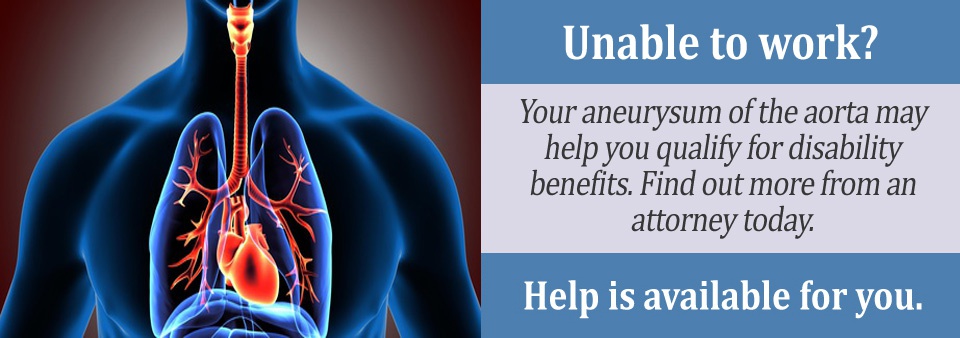Aortic aneurysms can be sudden and serious. Regardless of where they occur (typically in the head or chest), the complications caused by aortic aneurysms can make it difficult for an affected person to function as they did before the disorder.
Thankfully, in severe cases like these, Social Security disability benefits may be available to assist with the financial strain of this medical condition.
Look below to learn the top three tips you can follow when applying for benefits for your aortic aneurysm.
Tip #1: Compile documentation not just of your aneurysm, but of the conditions/symptoms that caused it.
Aortic aneurysms are rarely a stand-alone occurrence — in most cases, people who experience this condition have a previous disorder that led to it.
For instance, Marfan syndrome is a genetic disorder that affects the body’s ability to produce strong connective tissue. Because the heart relies on connective tissue to function, those with Marfan syndrome are at high risk for conditions like aortic aneurysms, further demonstrating a need for Social Security benefits.
Other conditions such as atherosclerosis, cystic medial necrosis, or trauma to the heart area can also result in aortic aneurysms. When applying for benefits, be sure to include the details of these and any other preexisting conditions to further strengthen your case.
It's important to keep as many records as possible for your case--every bit of evidence can help.

Tip #2: Acquire all hospitalization records for the prior year.
When the Social Security Administration (SSA) evaluates cases, they don’t only look at medical tests. They also want to see if, regardless of medication and diagnosis, you are capable of sustaining yourself without hospitalization for long periods of time.
Frequent hospitalization alerts the SSA that your condition is not only serious, but that your condition is unpredictable enough to make working a less plausible option. If you have been hospitalized more than three times in the prior year for at least 48 hours each time, then it is especially likely you will qualify for benefits.
Tip #3: Continue to update the SSA throughout the application process.
The typical disability benefits application process can be a bit tedious. From the length of the application itself to the time it takes for evaluation, sometimes applicants go a period of multiple months before hearing a decision on their application
During this period, it is important to continue getting regular check-ups and updated tests post-aneurysm. Not only will this help to keep you healthy and taken care of during the process, but changes in your symptoms can be sent after applying to update the SSA. Updates can be submitted by mail or by calling the SSA to update the information on file.
Contacting an Attorney
Social Security applications can be tricky to navigate and complete correctly. Because even the smallest typo can affect your chances of getting benefits, it is important to be certain that your application is free of mistakes.
One of the best ways to ensure this is by speaking with a disability attorney. Not only can they assist you with completing and filing the application, but they can help you to update the SSA, organize medical documents, and start the appeals process if necessary.
Before beginning your application, consider a free consultation with a disability attorney to give yourself the best chance at receiving disability benefits.